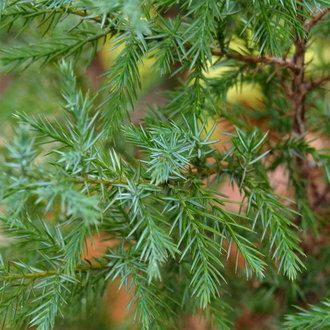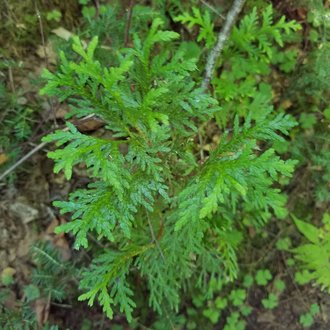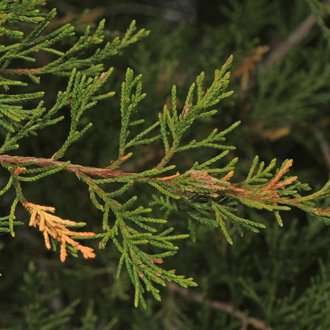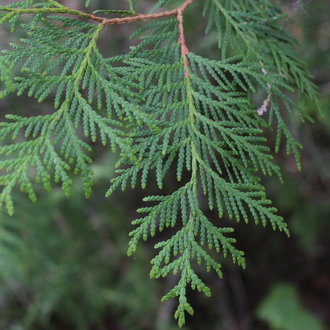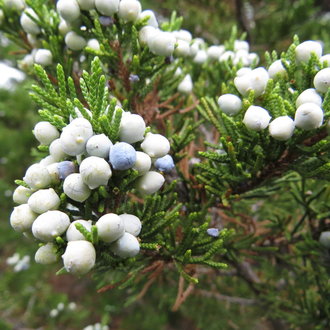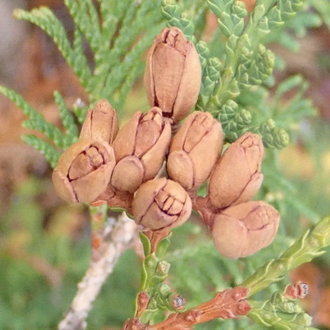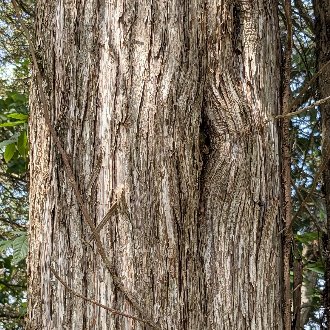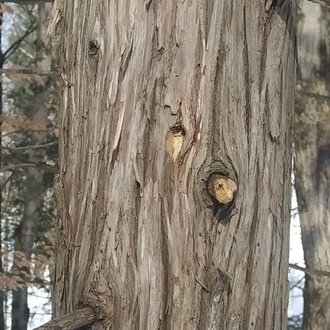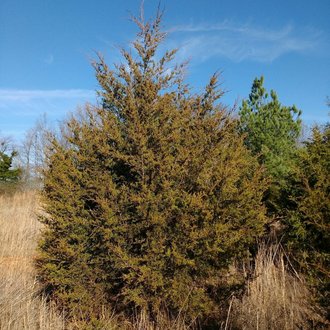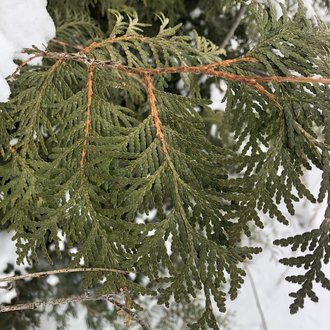Eastern Redcedar vs Northern White-Cedar
These two species are often confused by people inexperienced in identifying plants of the Cupressoideae subfamily. They are easily distinguished by fruit, bark, and characteristics of the needles or scales. Where their ranges overlap, both tend to be found on calcium-rich substrates, but redcedar occupies drier, sunnier, nutrient-poor, and more early-succession habitats, whereas white-cedar is found on richer, wetter, shadier sites.
Eastern Redcedar (Juniperus virginiana) | Northern White-Cedar (Thuja occidentalis) |
A native evergreen conifer of sunny habitats; unlike most conifers, tends to decrease soil acidity. | A slow-growing, medium-sized coniferous tree of the northeast, found on moist sites and those with neutral to alkaline pH. |
Young plants have sharp-pointed needles. Photo © Katja Schulz, CC BY 4.0. | All plants, including seedlings, exclusively have scalelike leaves. Photo © Sarah Johnson, CC BY 4.0. |
Scalelike foliage sparser, less flattened, and branching less frequently but more irregularly. Photo © Judy Gallagher, CC BY 4.0. | Scalelike foliage dense, strongly flattened, and branching frequently and regularly. Photo © Quinten Wiegersma, CC BY 4.0. |
Fleshy, berry-like seed cones turn pale whitish to blue when ripe. Photo © Dan MacNeal, CC BY 4.0. | Drier seed cones turn brown when ripe. Ripe cones show visible scales which come apart easily. Photo © Rob Foster, CC BY 4.0. |
Bark is thinner, peeling in thin strips. Photo © dvollmar, CC BY 4.0. | Bark is thicker, with broader ridges and furrows. Photo © Wendelyn Bolles, CC BY 4.0. |
Foliage often turns reddish brown in winter. Trees often look reddish brown from a distance in winter. Photo © Ken-ichi Ueda, CC BY 4.0. | Foliage ranges from yellowish to dark green; does not turn as reddish brown in winter. Photo © Dan MacNeal, CC BY 4.0. |
References & External Resources
These short lists show only links helpful for ID. For a complete list of references and resources also covering other aspects of ecology, visit the links section of the full article on each plant, which is the first entry here.



